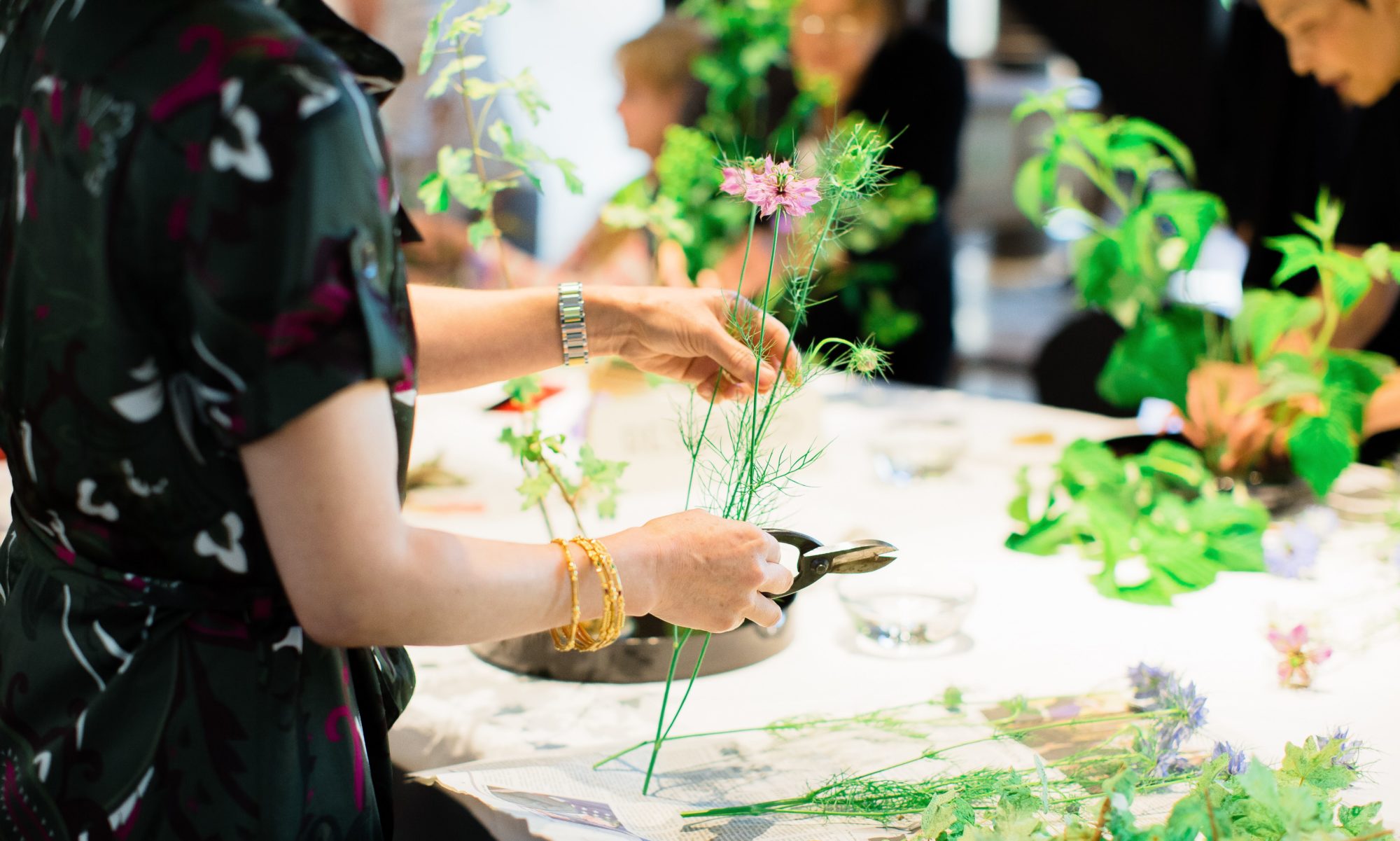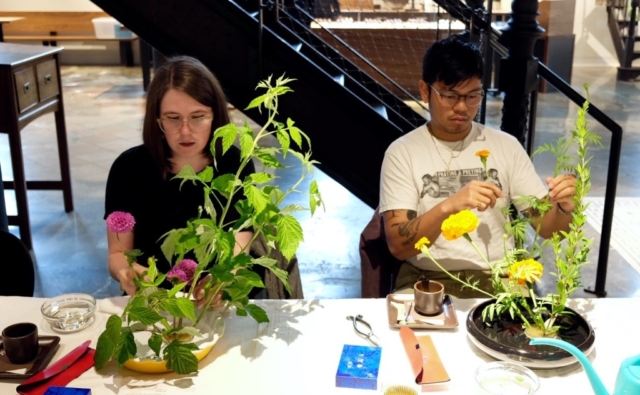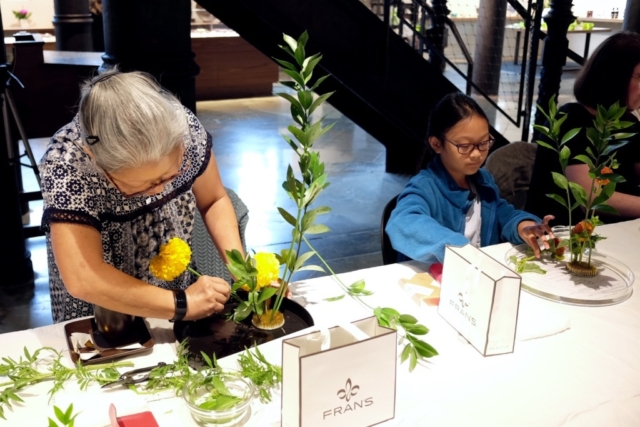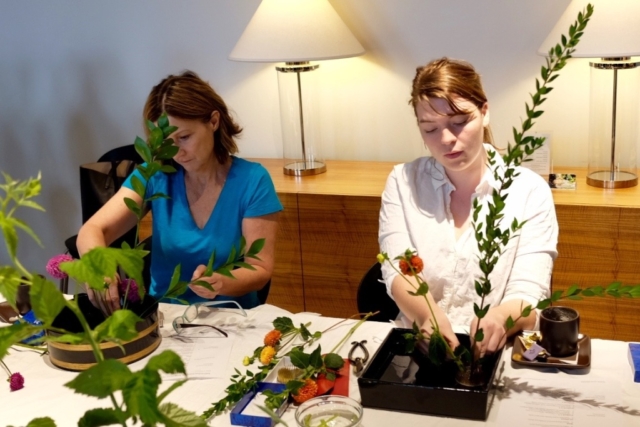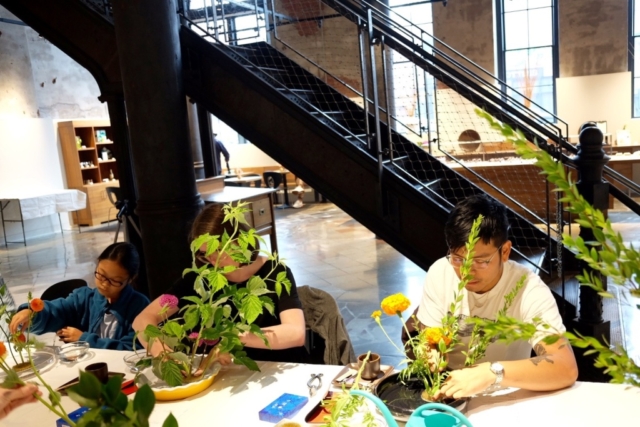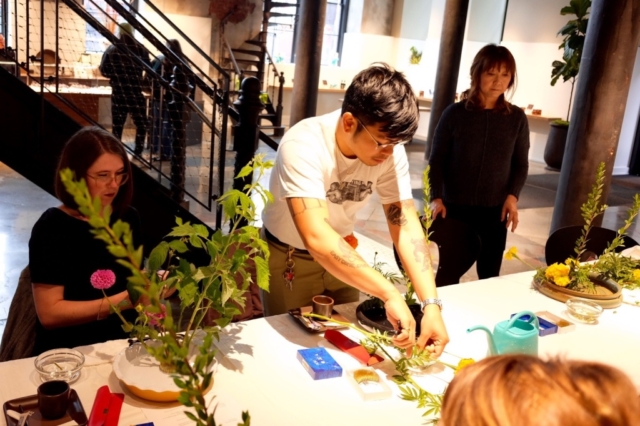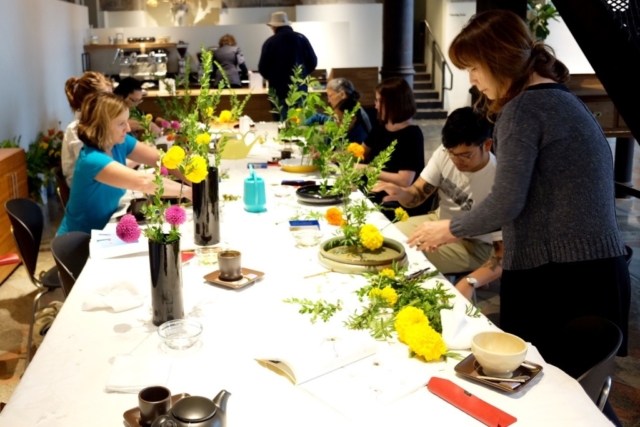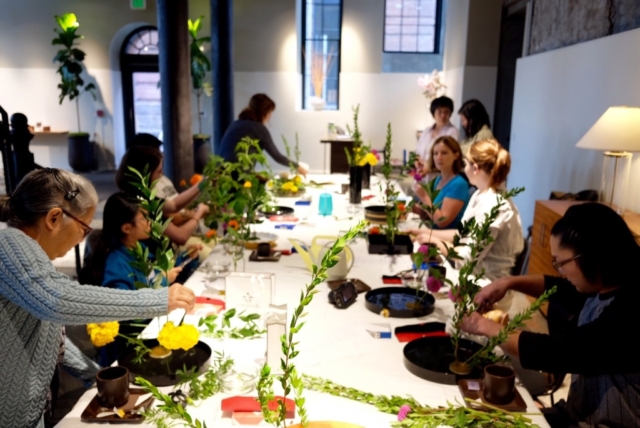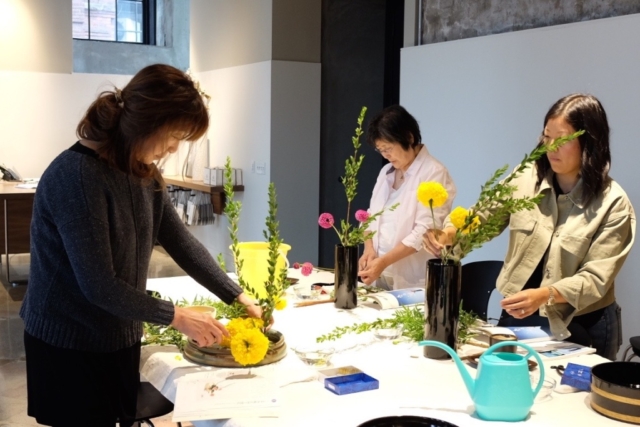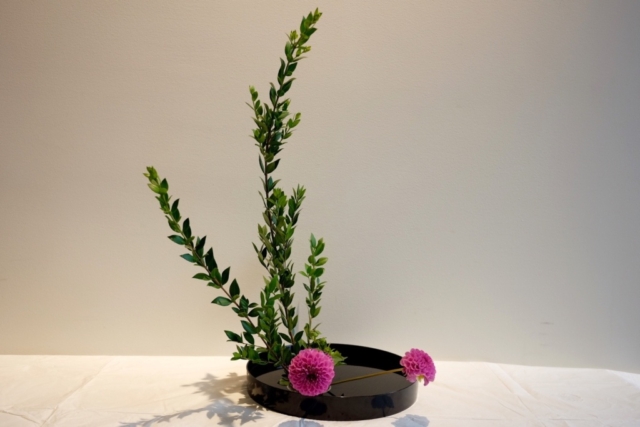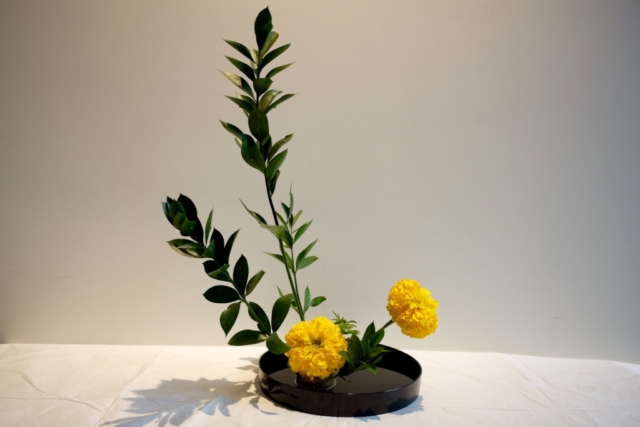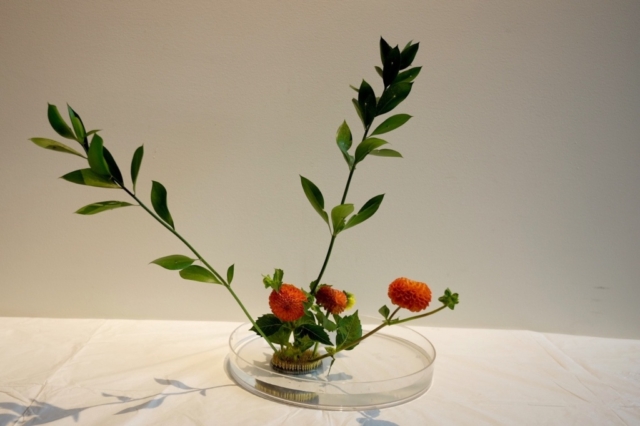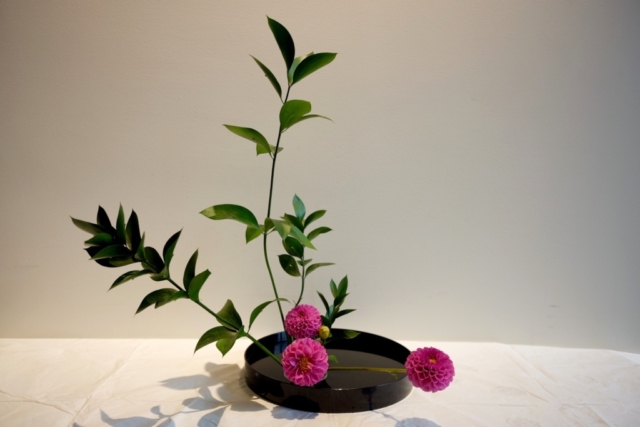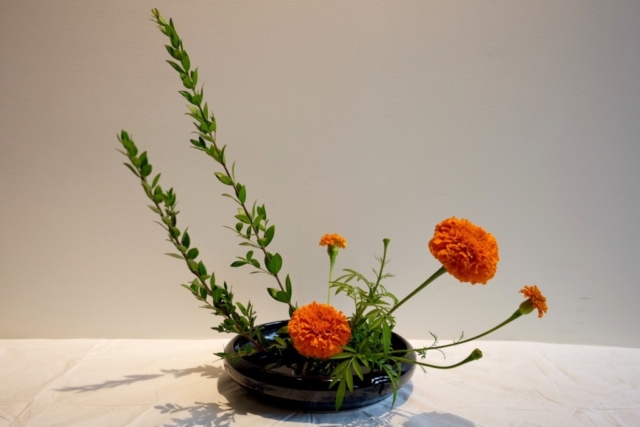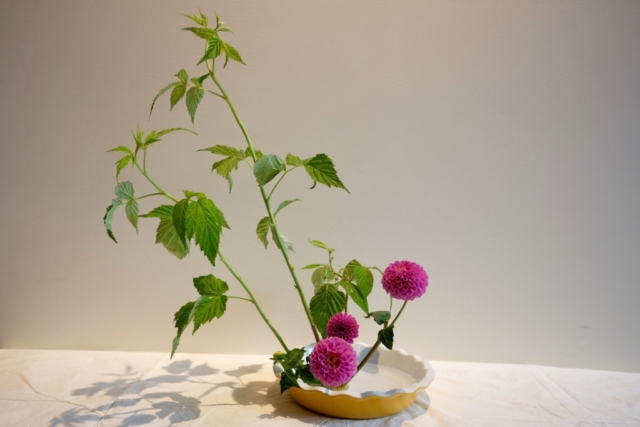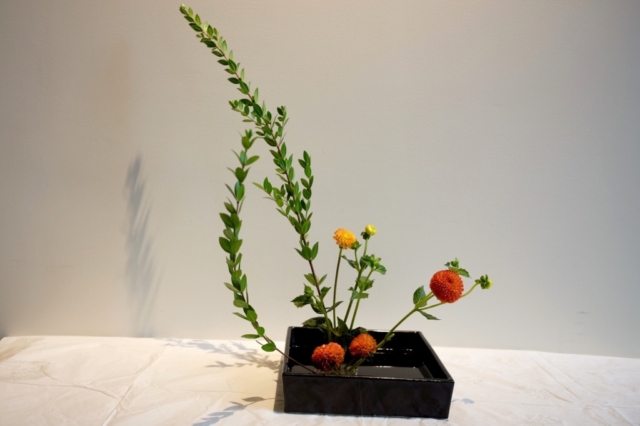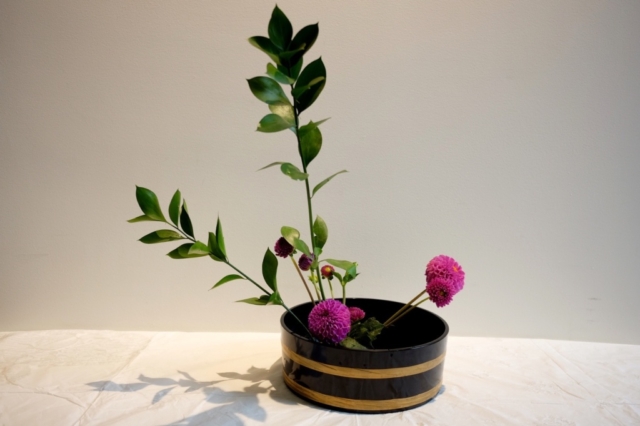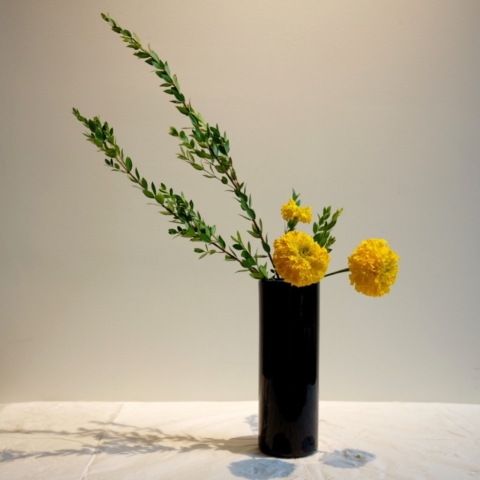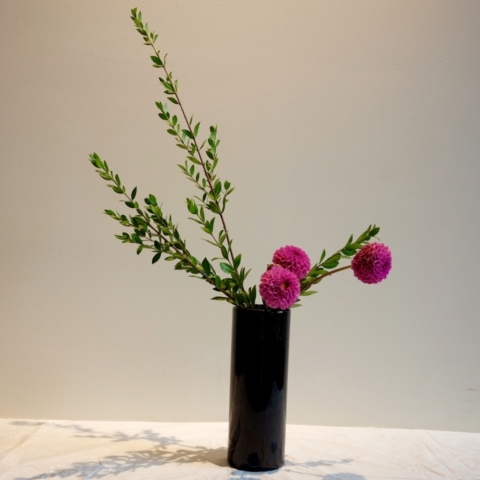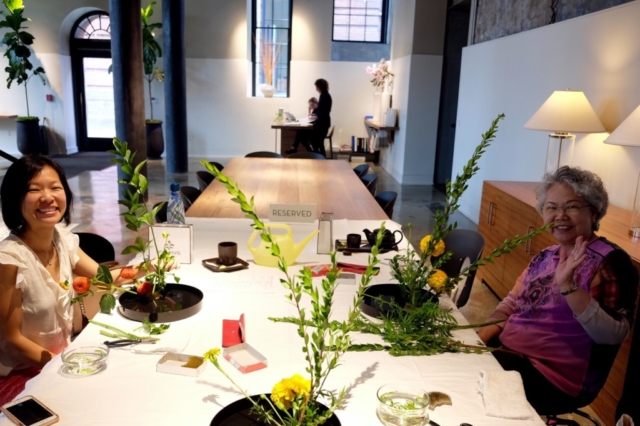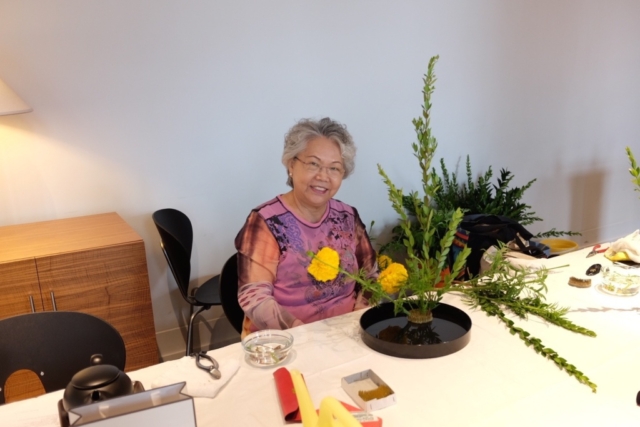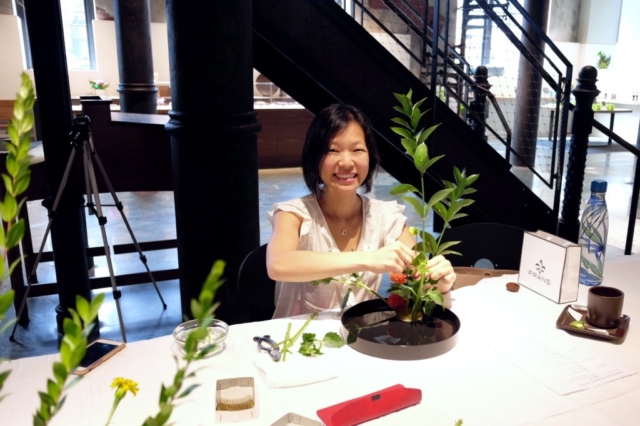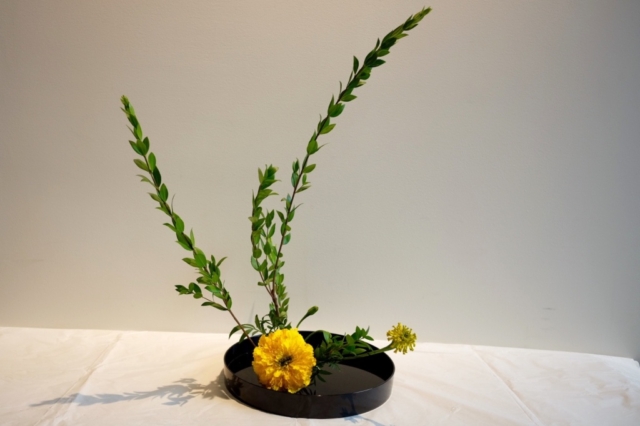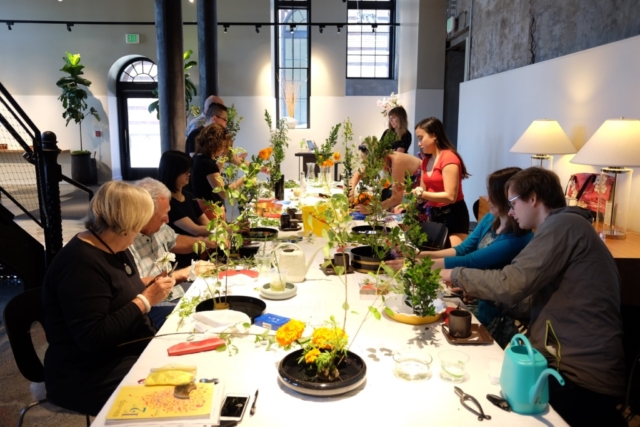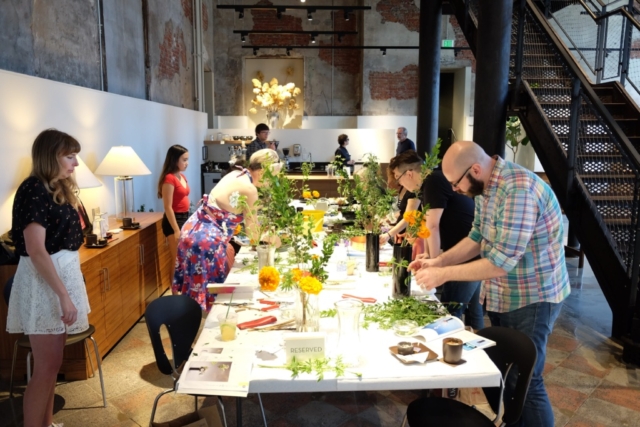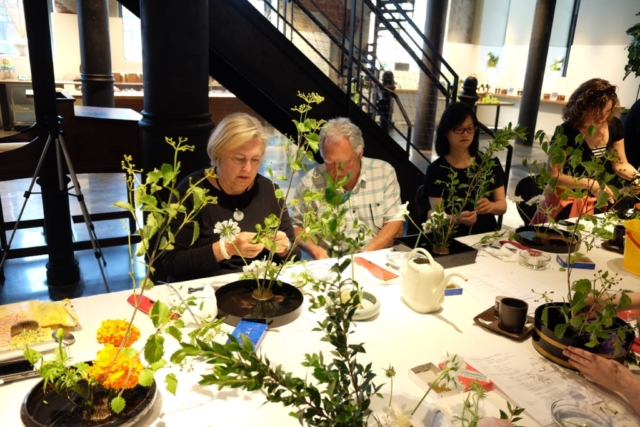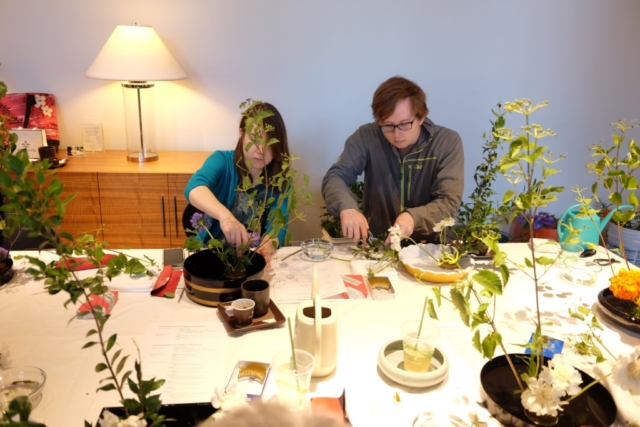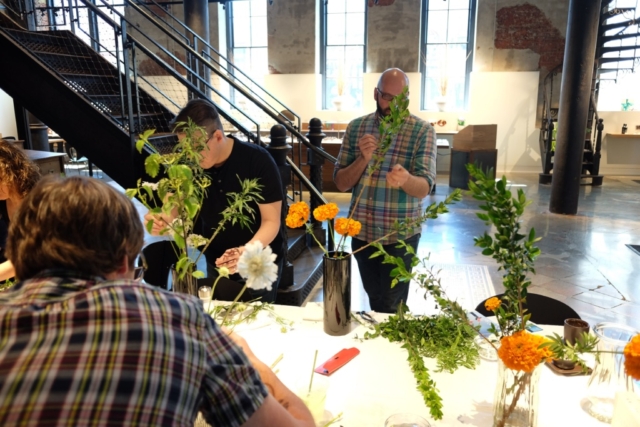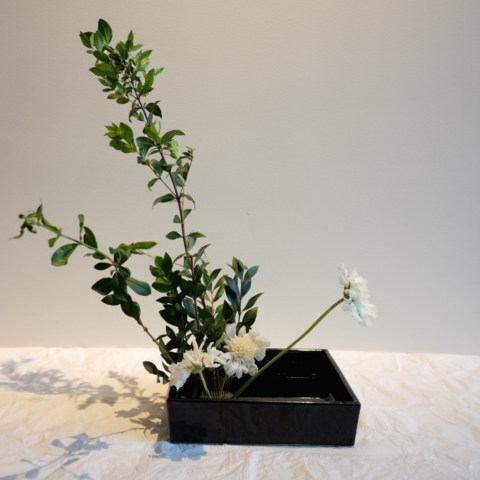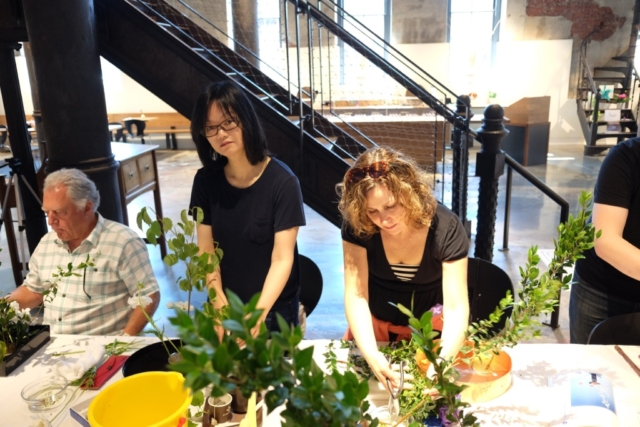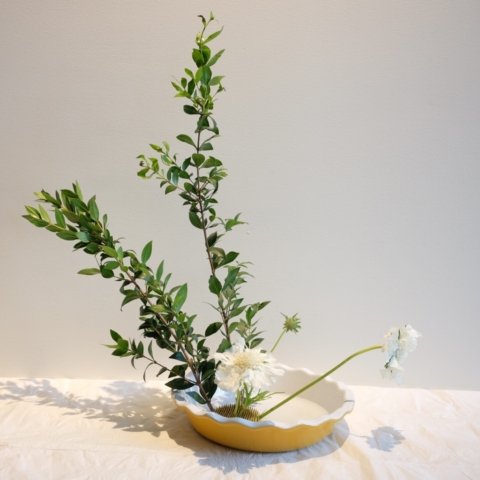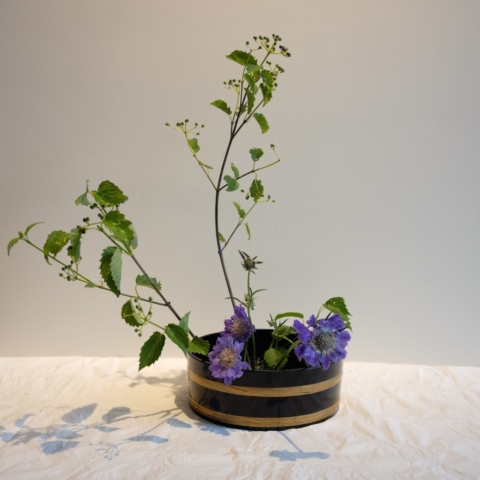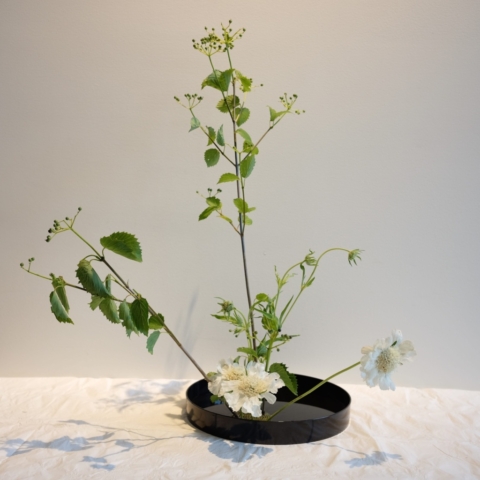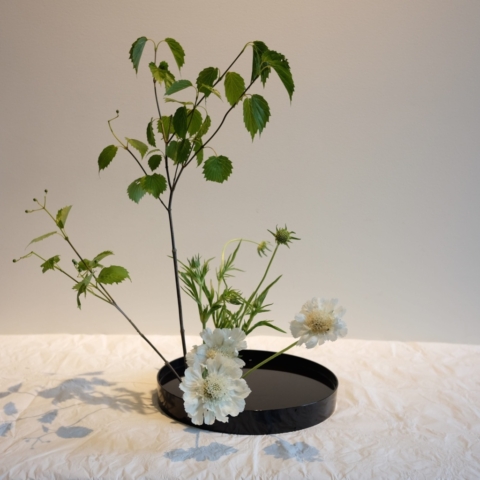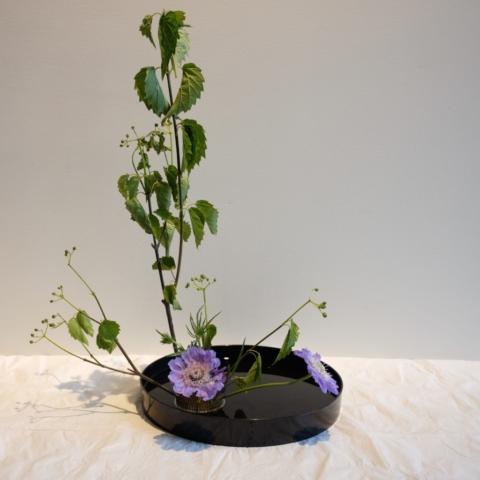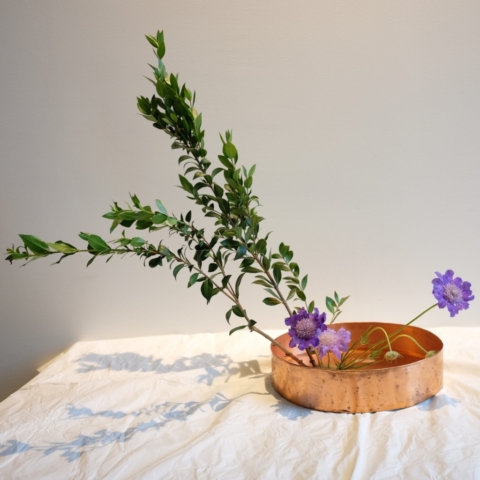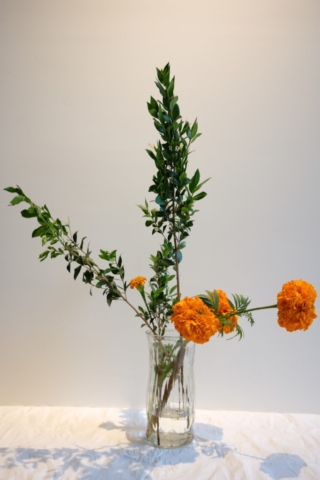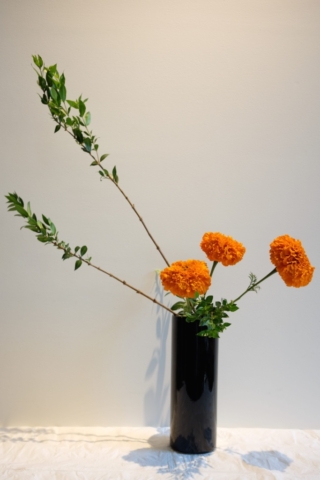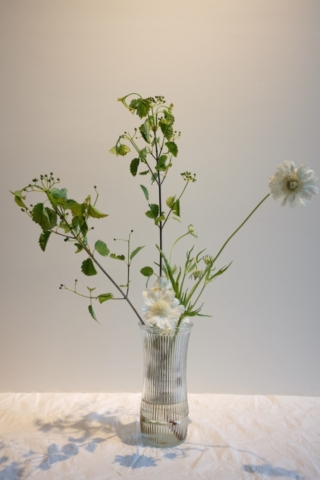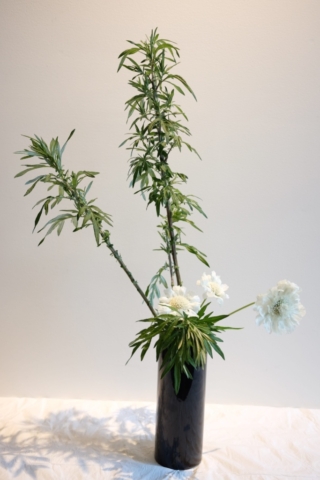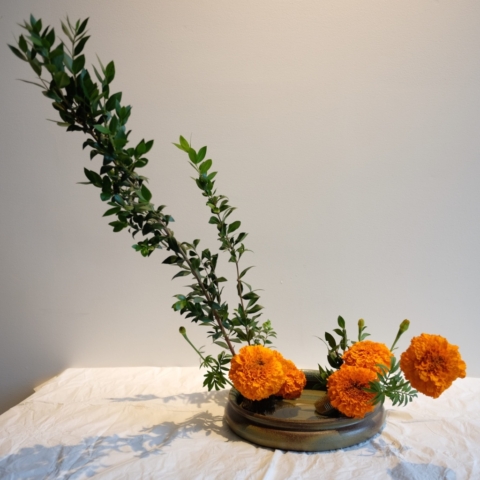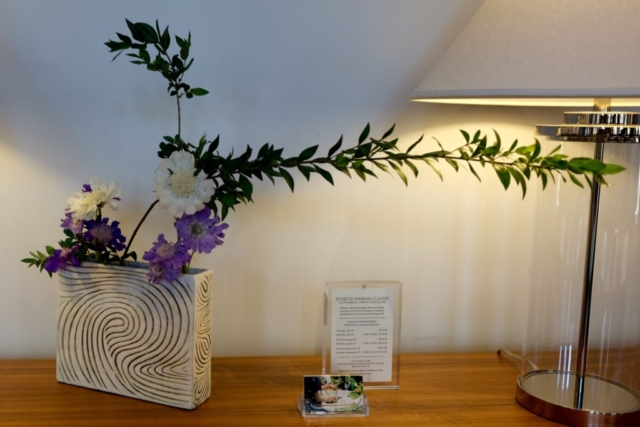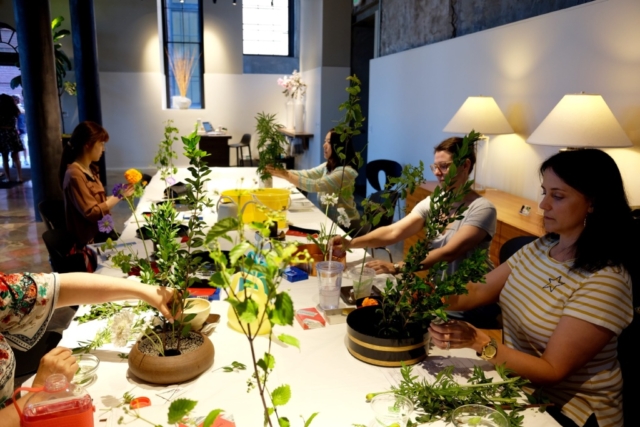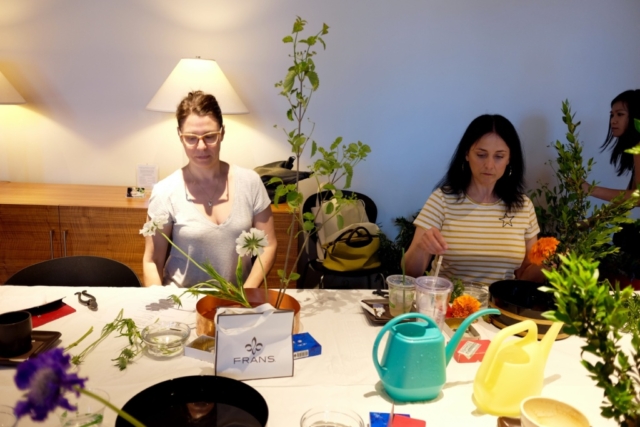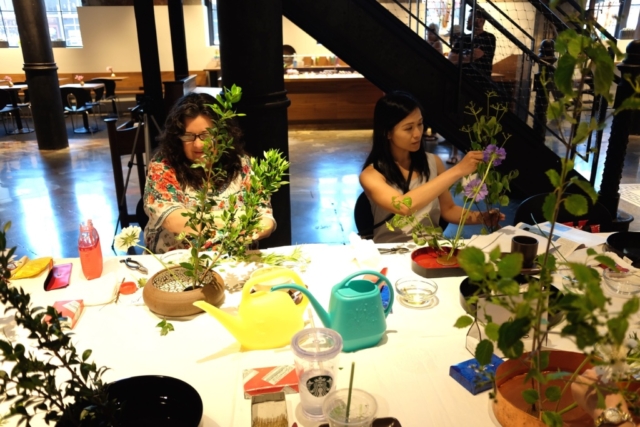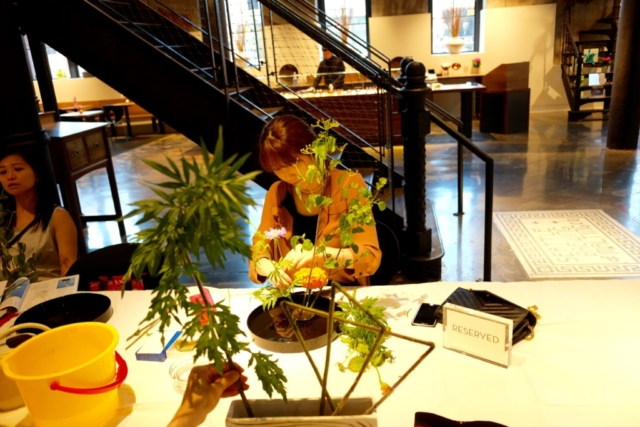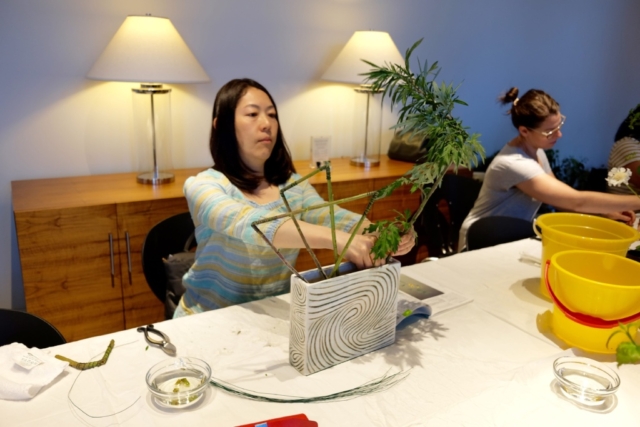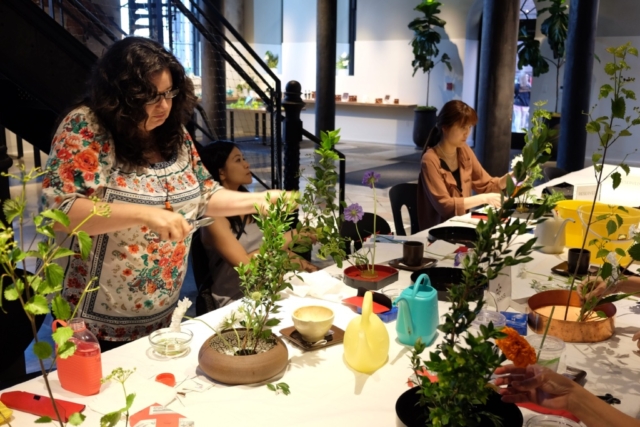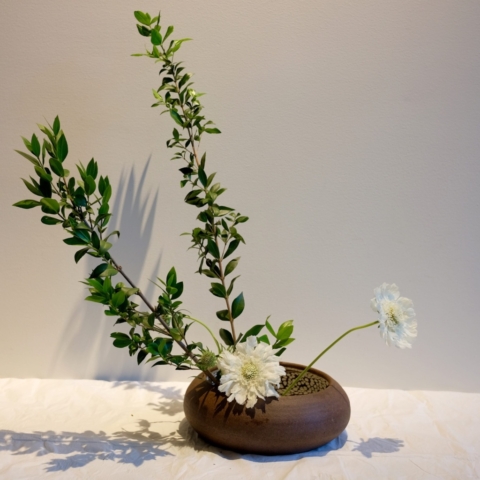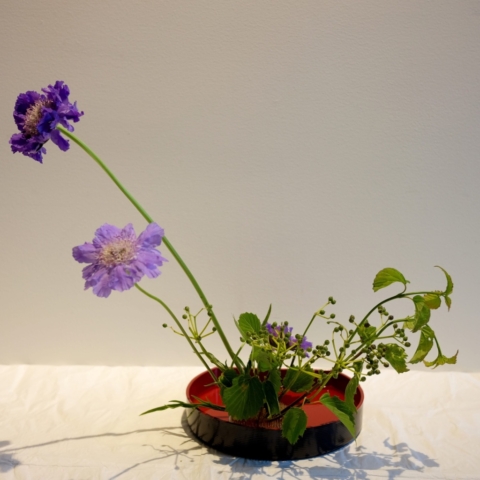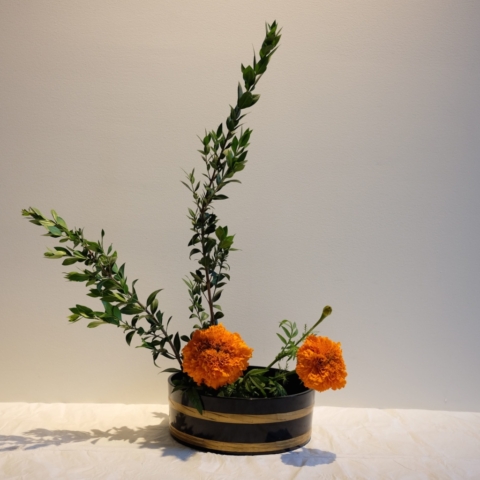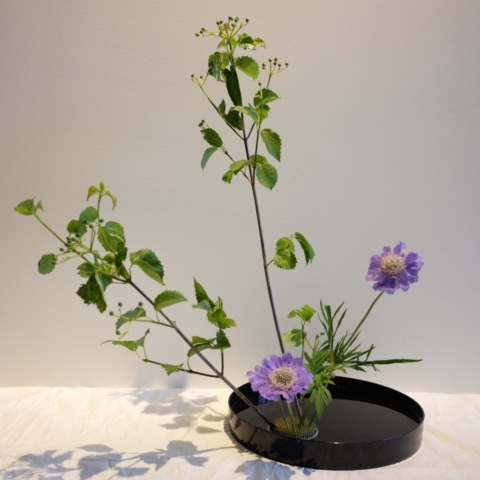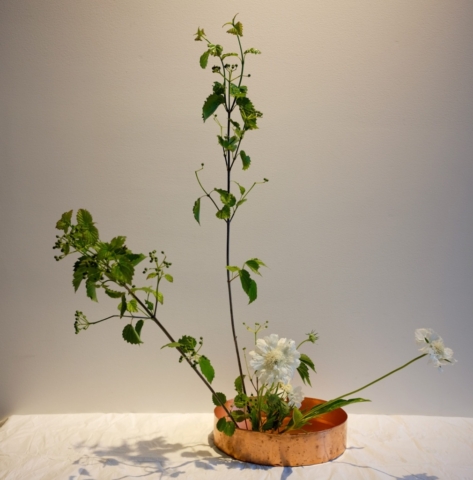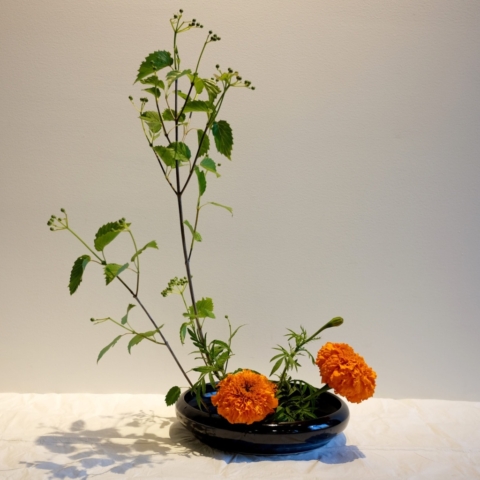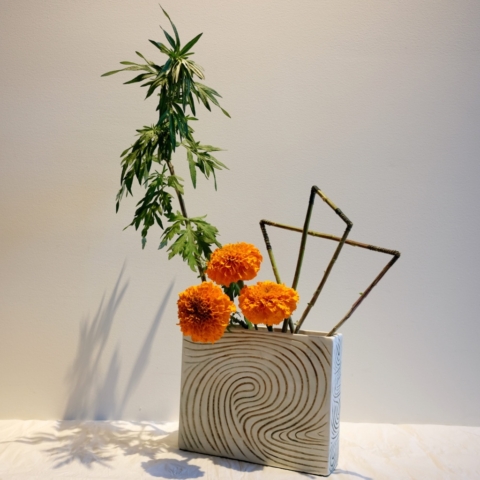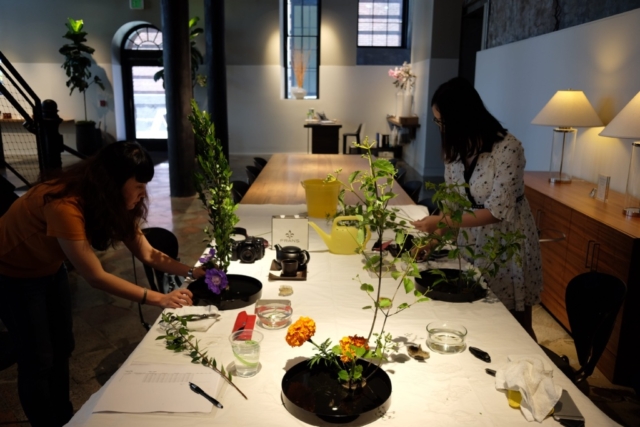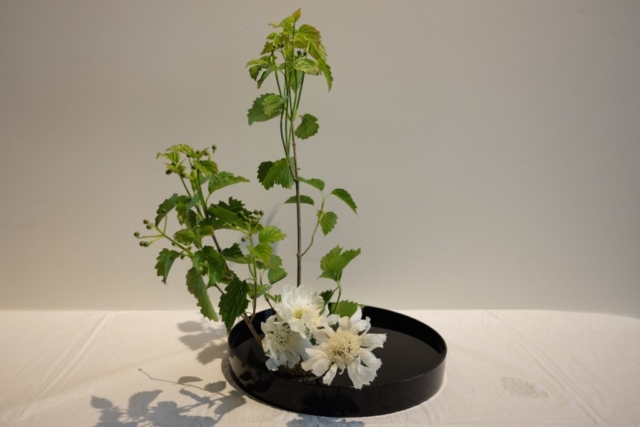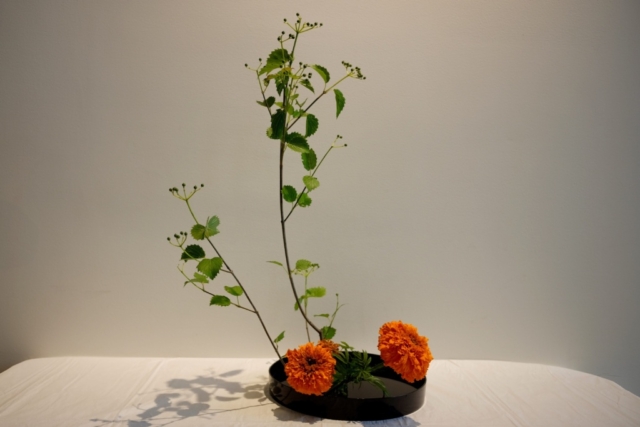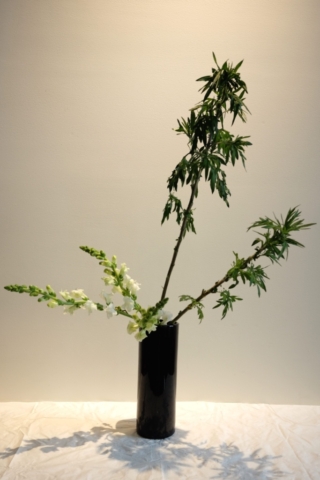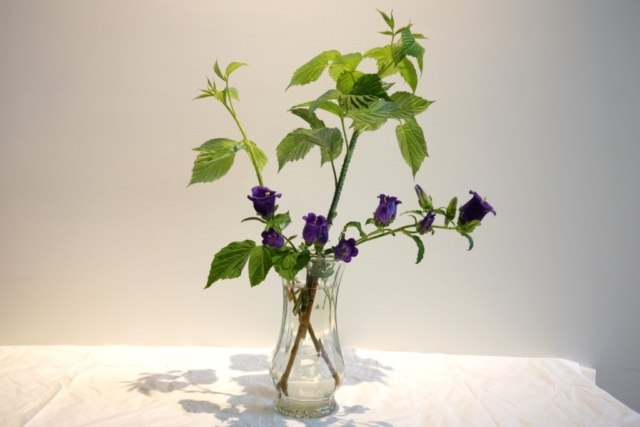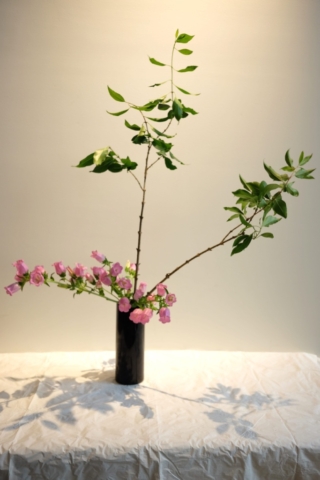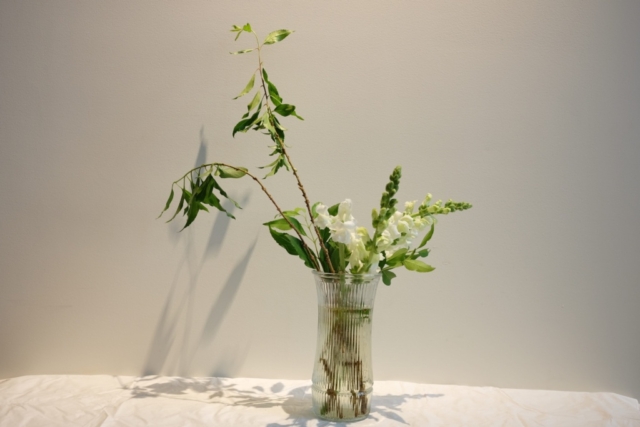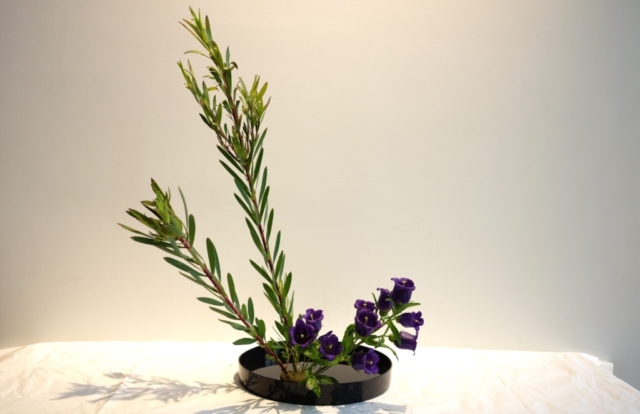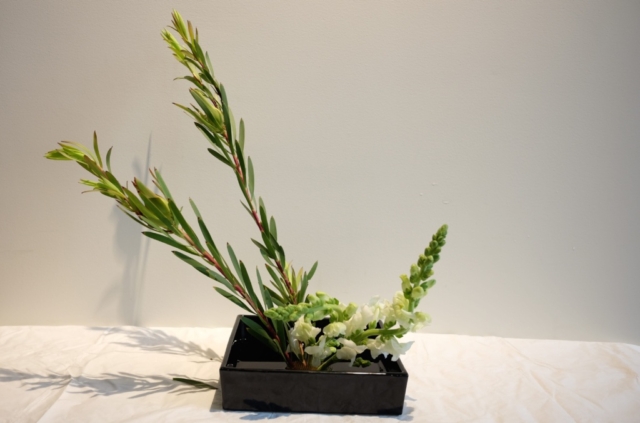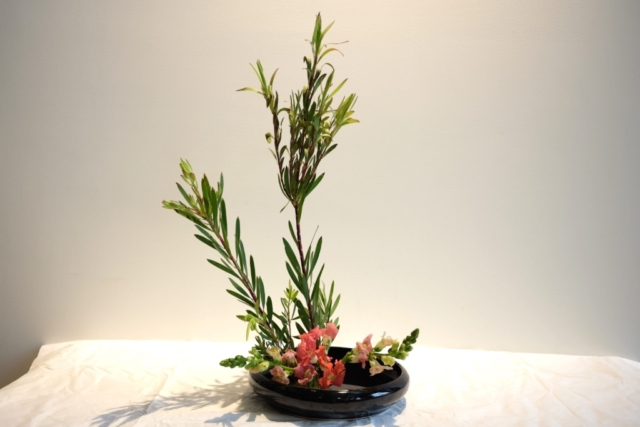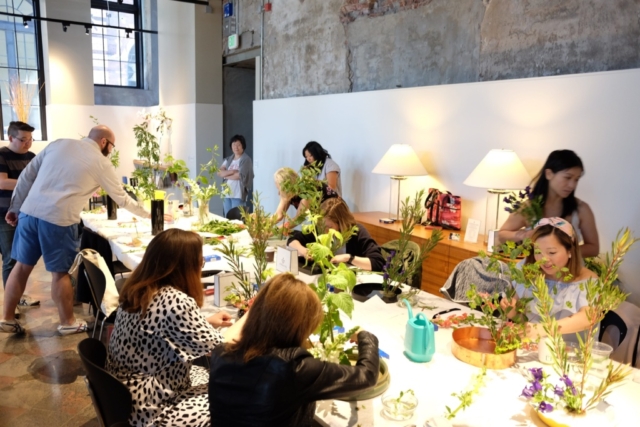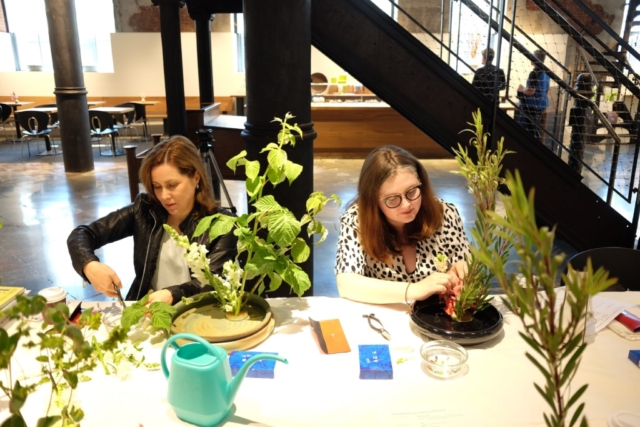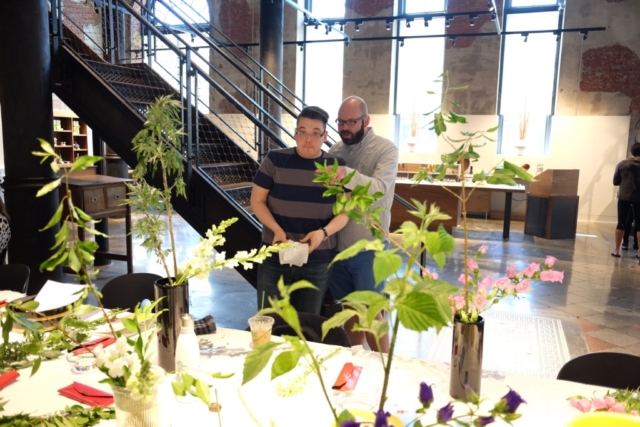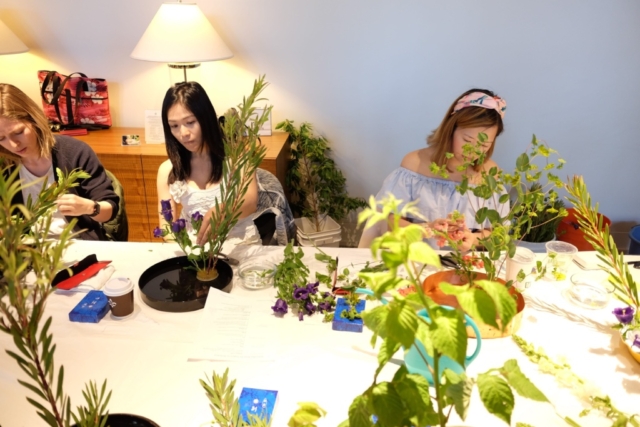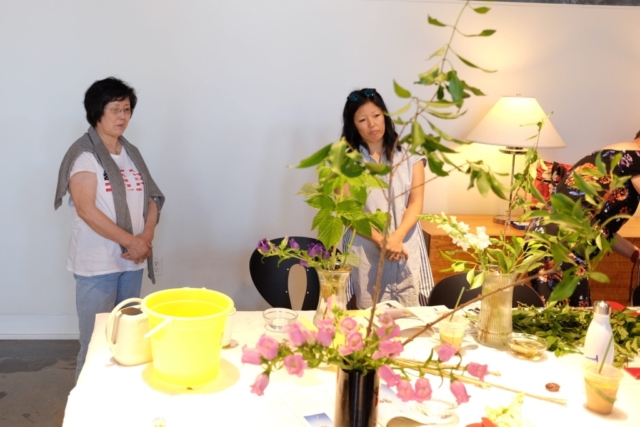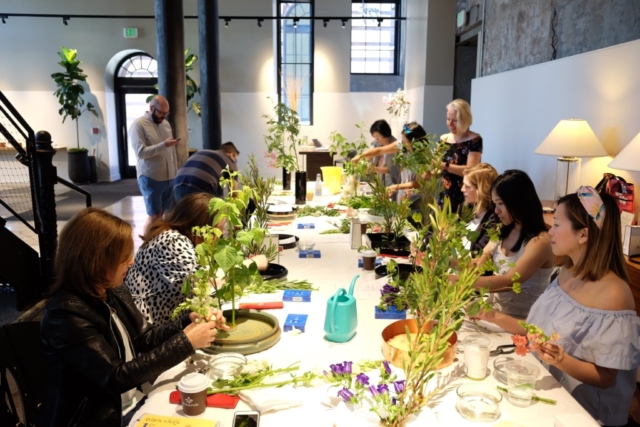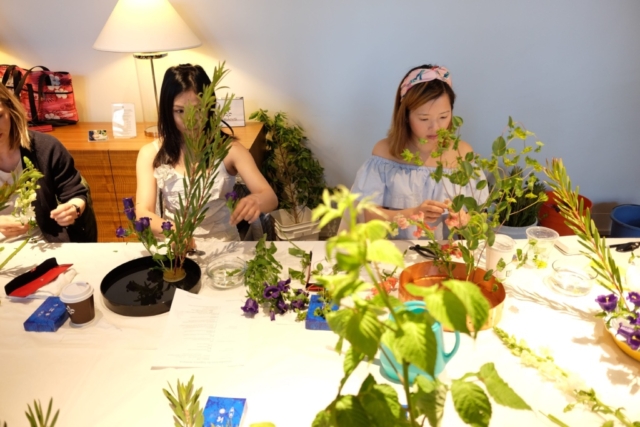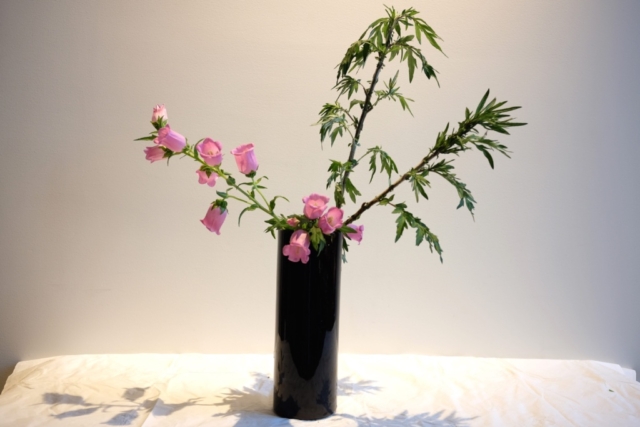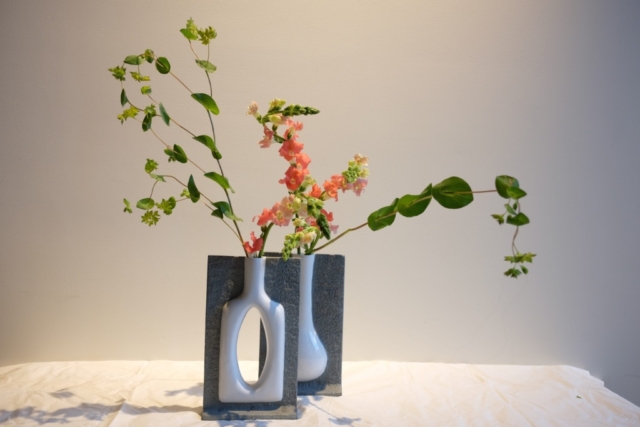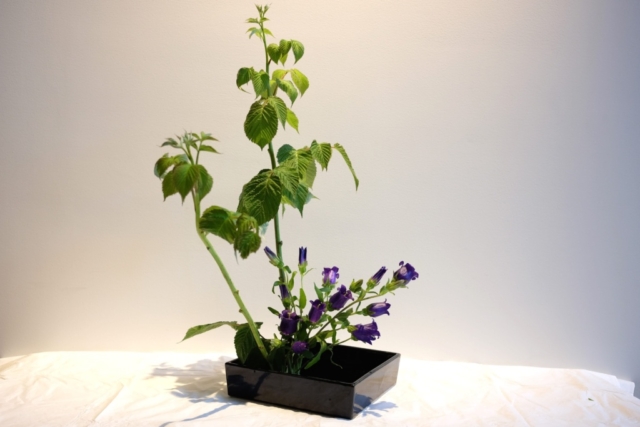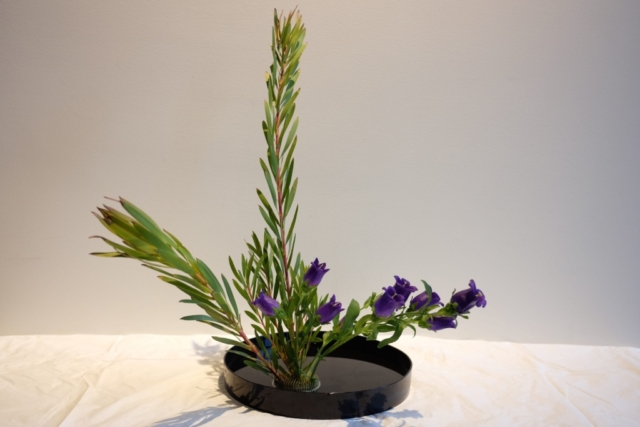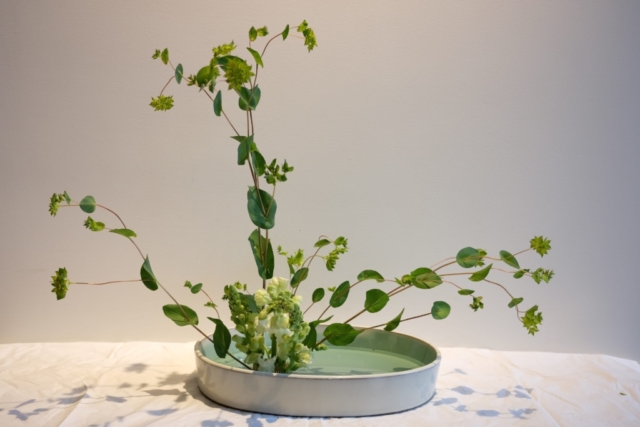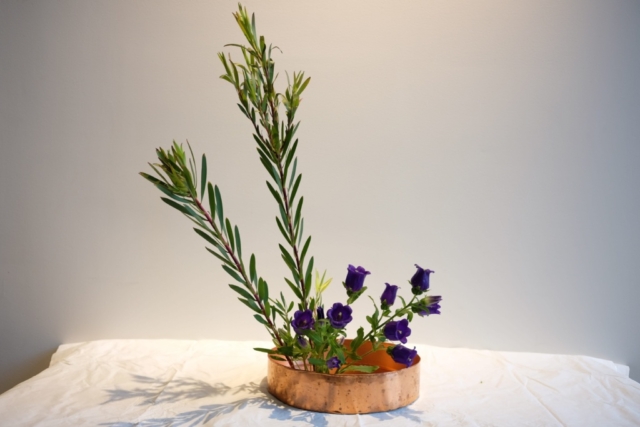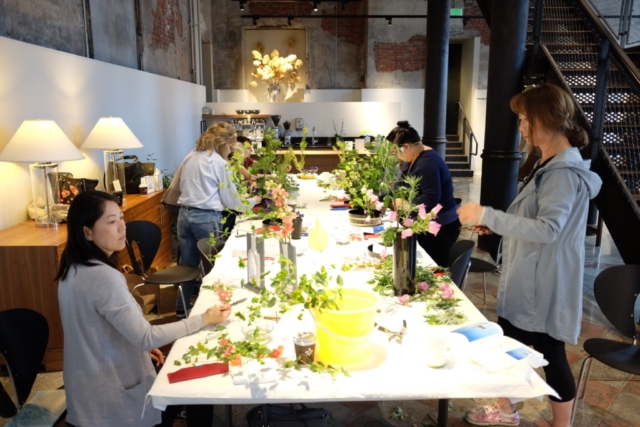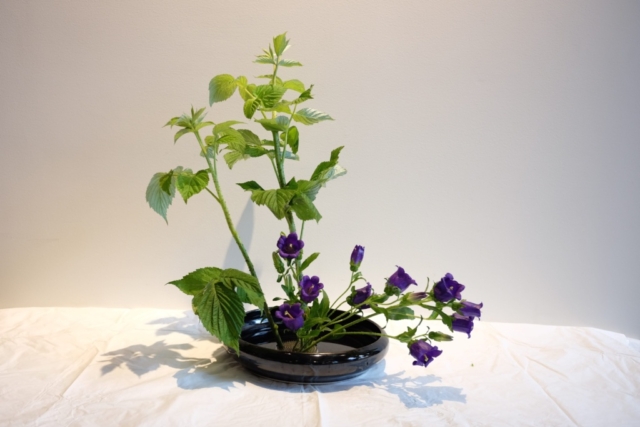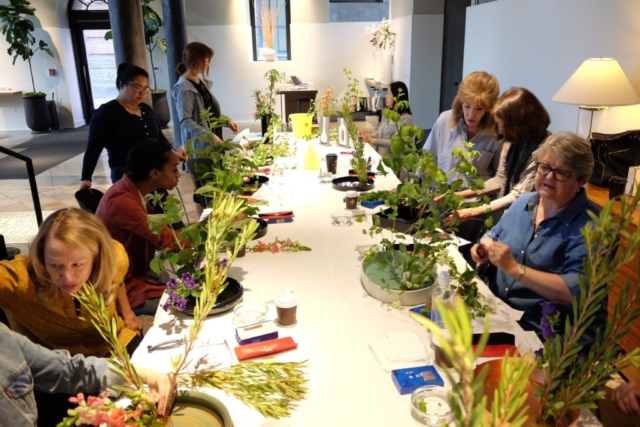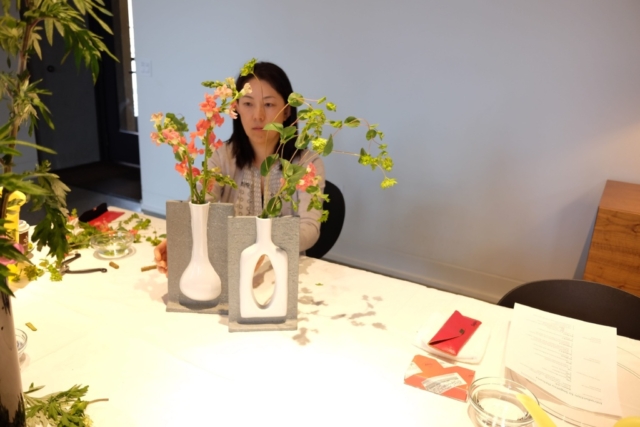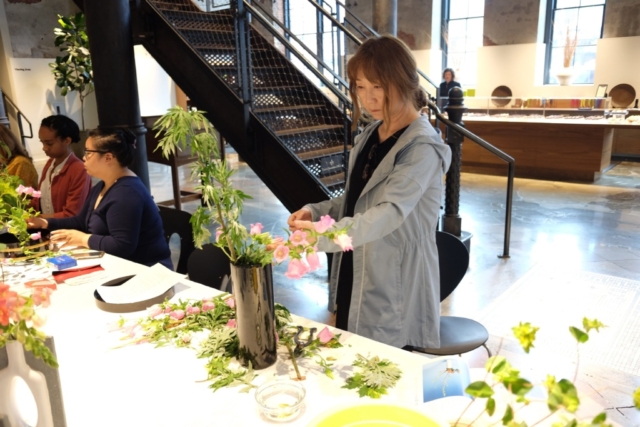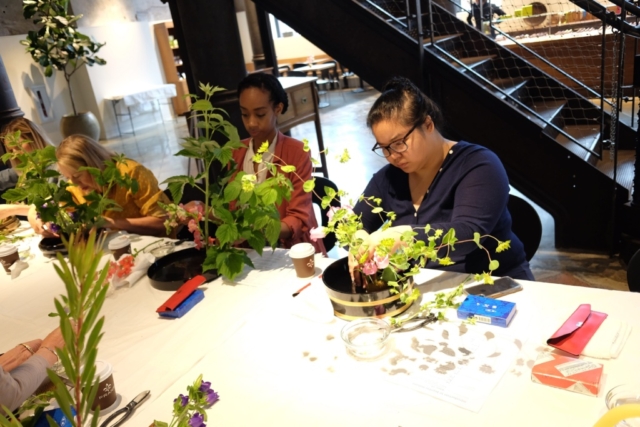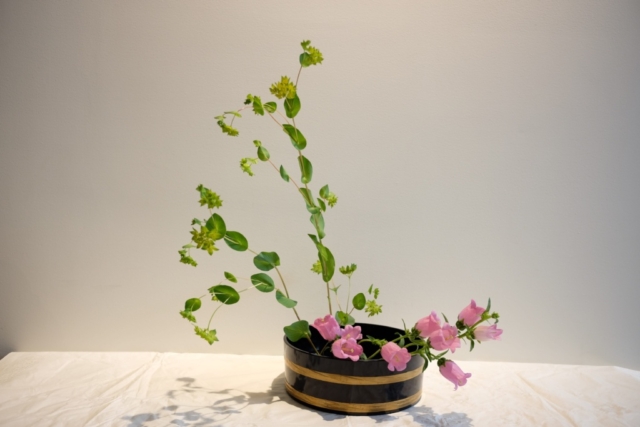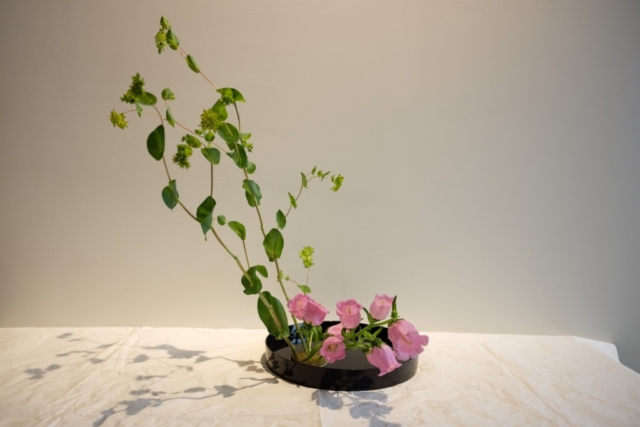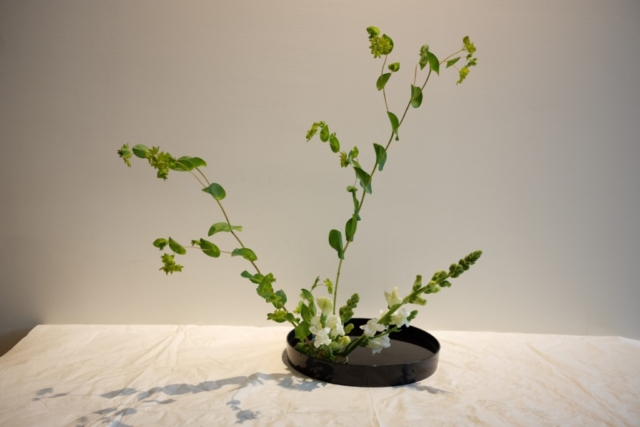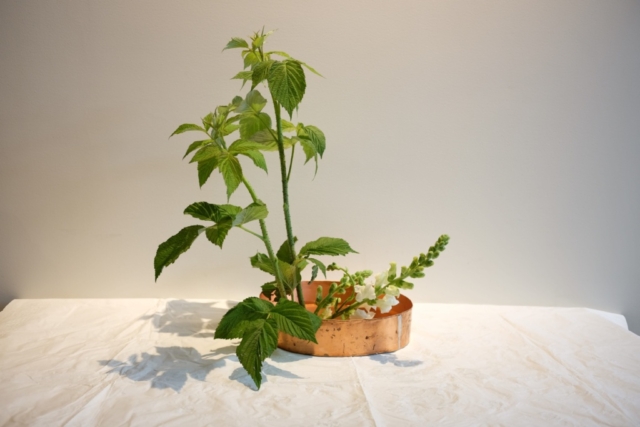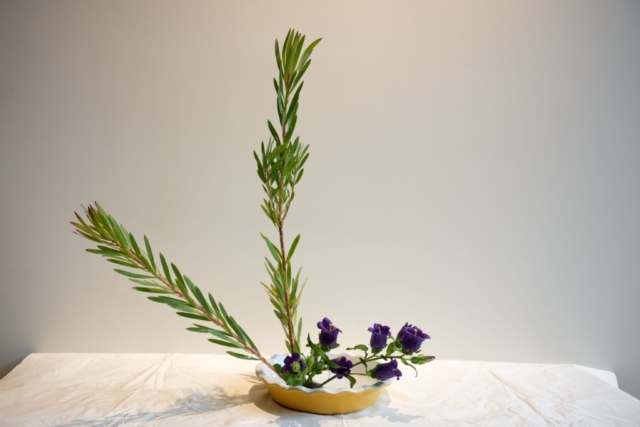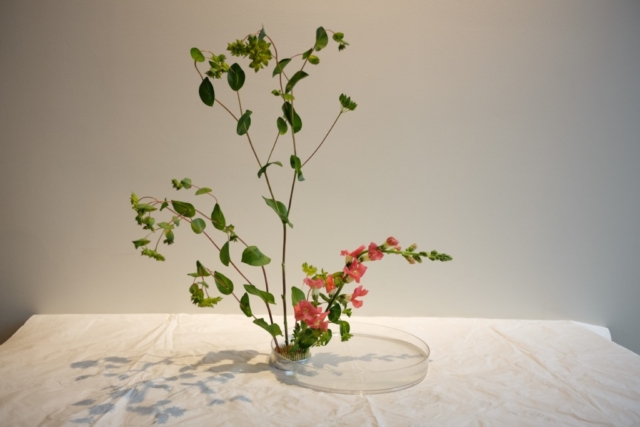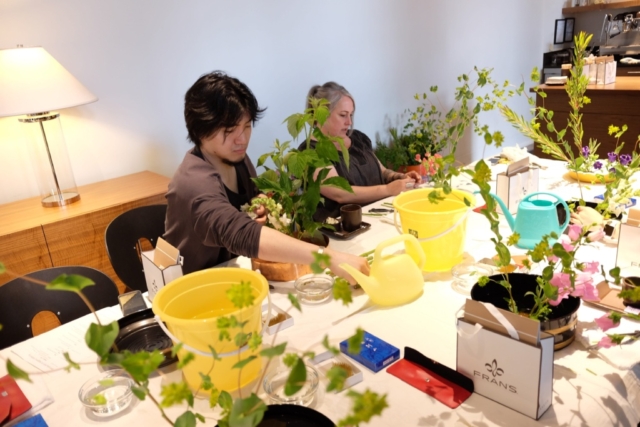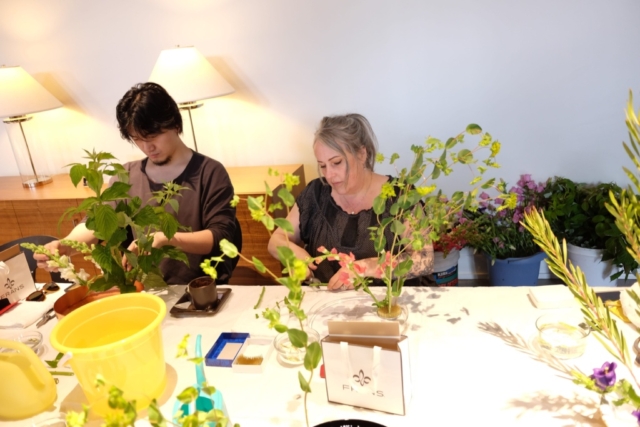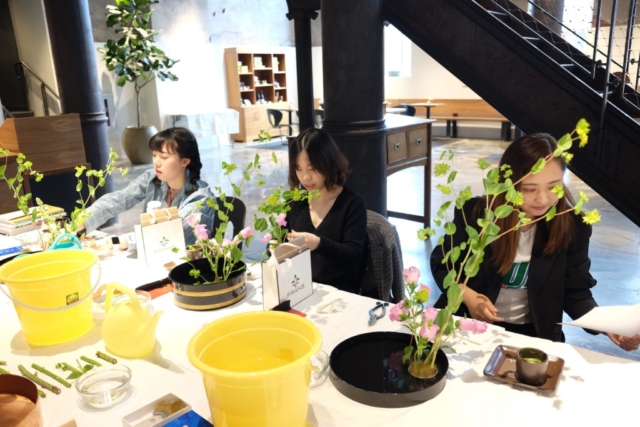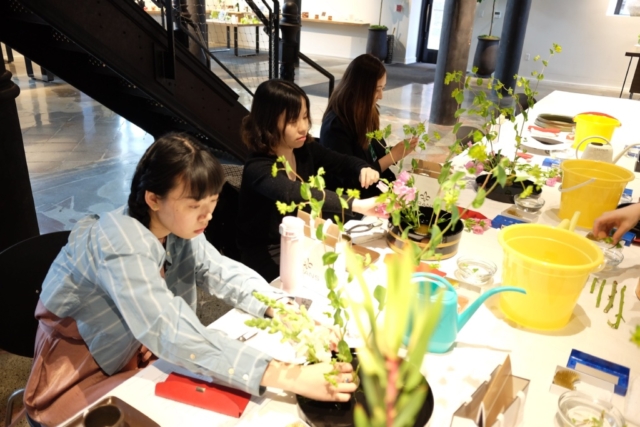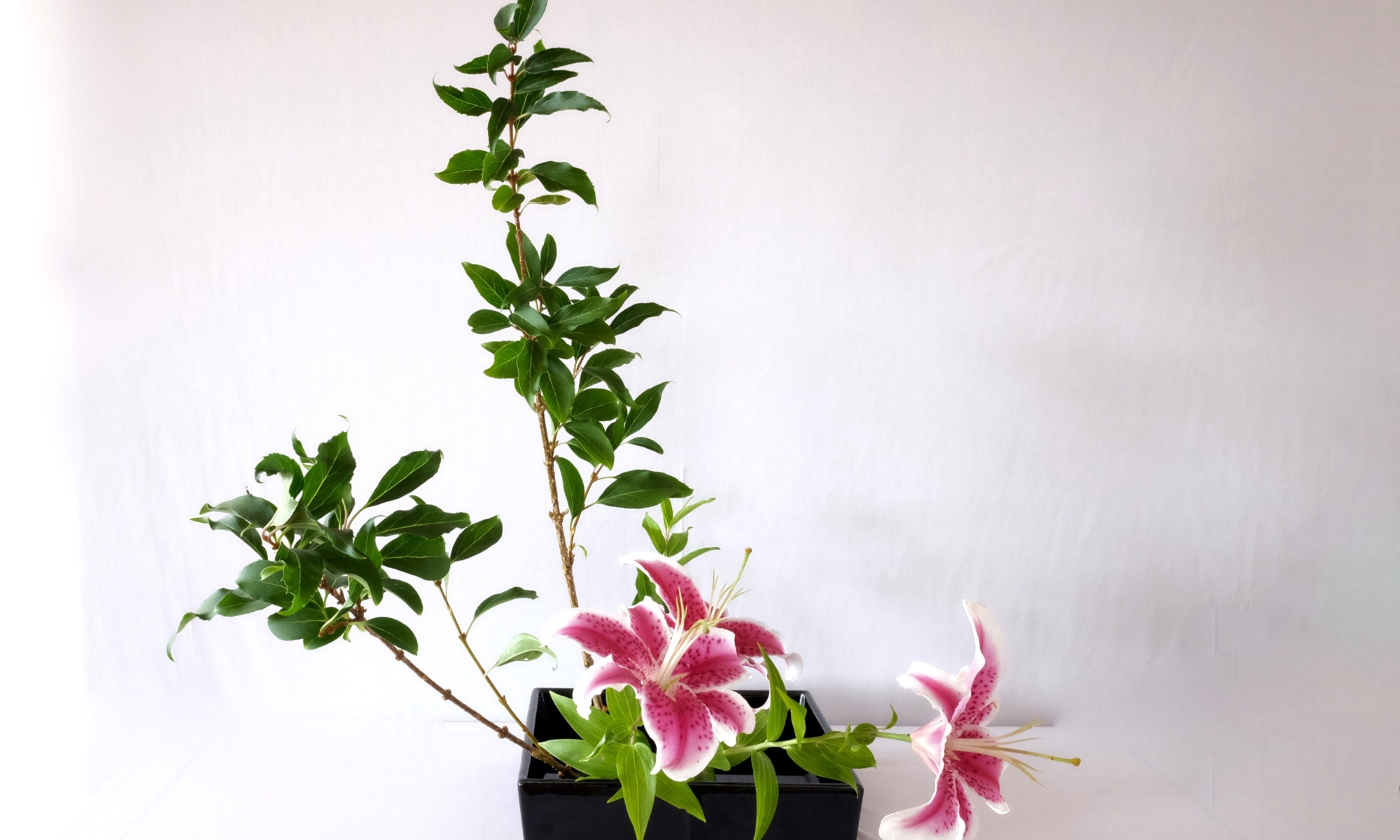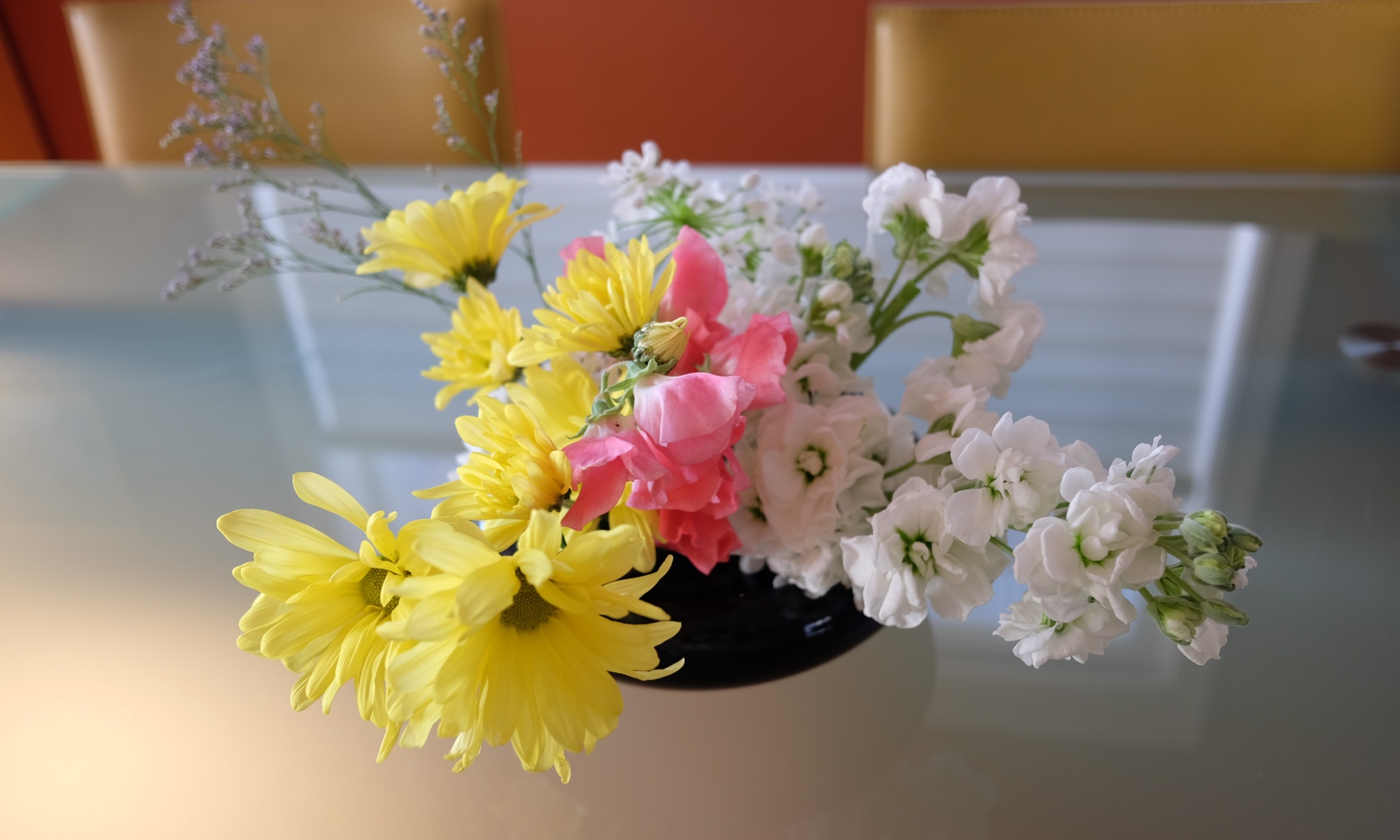11 People enjoyed today’s Ikebana class. Nice try, everyone!
Class Photos 8/23/2018
Class Photos 7/14/2018 Afternoon
Class Photos 7/14/2018 Morning
Class Photos: 7/12/2018
Class Photos: 6/16/2018 Afternoon
Class Photos: 6/16/2018 Morning
Class Photos: 6/14/2018
What are Three Elements of Ikebana
In my introductory class, I always start with “What does the word Ikebana mean?” I have mentioned it in my previous blog post as well, so I hope you visit it also.
Yes, Ikebana is about you, the creator, the artist. In Ikebana, your canvas is not a flat sheet of paper or cloth. It’s the three dimensional space in front of you. And flowers are media to be used to express yourself. Let’s take a closer look at the media.
Line
Cut out of the nature, branches and flowers have some shape. It may be straight or it may be curved, but after all the most abstract form you see in them is line. With only one line, you can express direction, movement, or energy flow. With two lines you can create surface. With three lines, you can create a structure in the three-dimensional world.
Mass
Some flowers have substantial volume. Some have sparse look. Likewise, some branches are covered with thick leaves, some have very thin leaves. Mass or absence of mass, is another element you use to express yourself.
Color
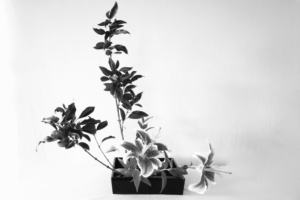
Just for fun, here is the photo of the same Ikebana arrangement, in black and white. In photography I kind of like it. But in Ikebana canvas, you can’t eliminate colors. They are always there, so let’s use them. Want to make a strong statement through Ikebana? Then use contrasting colors. Want to express harmony? Then choose similar colors.
Line, mass, and color… They are the three basic elements of Ikebana.
How to Arrange Flowers on a Dining Table
As the Sogetsu School’s motto says, ikebana is for anytime, anywhere and by anyone. You don’t need a special alcove to display ikebana arrangement. Rather, you would like to enjoy beautiful arrangements near you in your daily life.
How much time do you spend sitting at the dining table? I guess, not only when you have meals, but maybe when you read newspapers, or you even work there. Why not accompany with you a little piece of beautiful flowers on the table?
Here are a couple of things you might want to keep in mind when you arrange flowers as a table centerpiece.
Height:
Assuming that several people will be sitting at the table and carrying conversation during the meal, you don’t want your centerpiece to be a distracting factor for your conversation. Make it short enough so that it doesn’t hide the face of the person sitting across the table. For that purpose, you might want to choose a flat container.
Direction:
If you are placing the piece against the wall, nobody will be poking the arrangement from the back, so you don’t have to worry about how it looks from the back. Not the case of a centerpiece. People will be looking at the piece from all different directions. You want to make sure that the piece looks nice from 360 degrees. When you arrange flowers, rotate the container occasionally and see if you have covered all the directions.
Scent:
You might be tempted to use that gorgeous lily you have just picked up from your garden, but wait! Its fragrance is so strong that it might clash or spoil your dinner you serve. For a table centerpiece, it is safe to avoid flowers with too strong fragrance.
With these three things in mind, let’s spruce up your dining table with flowers. Enjoy!
